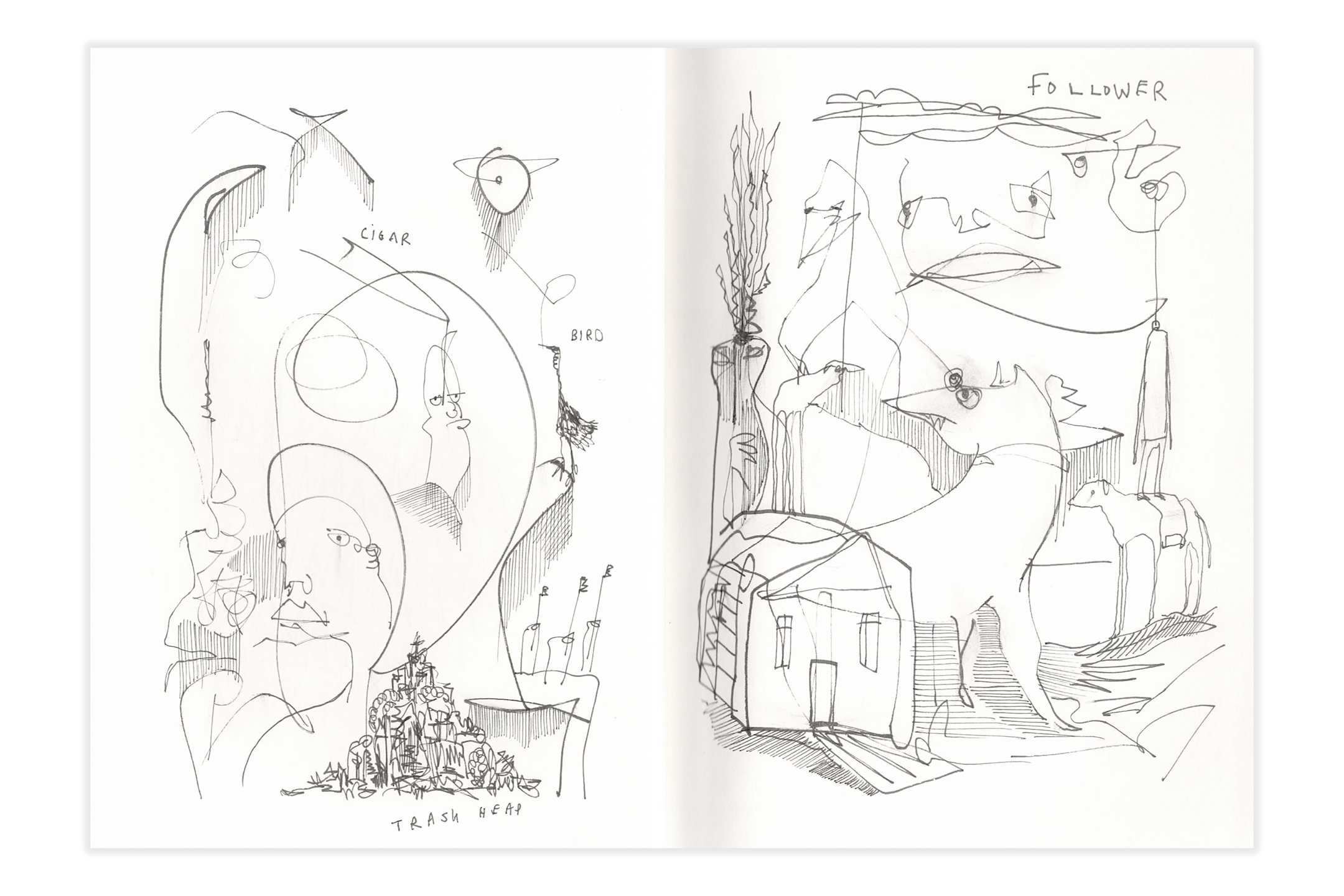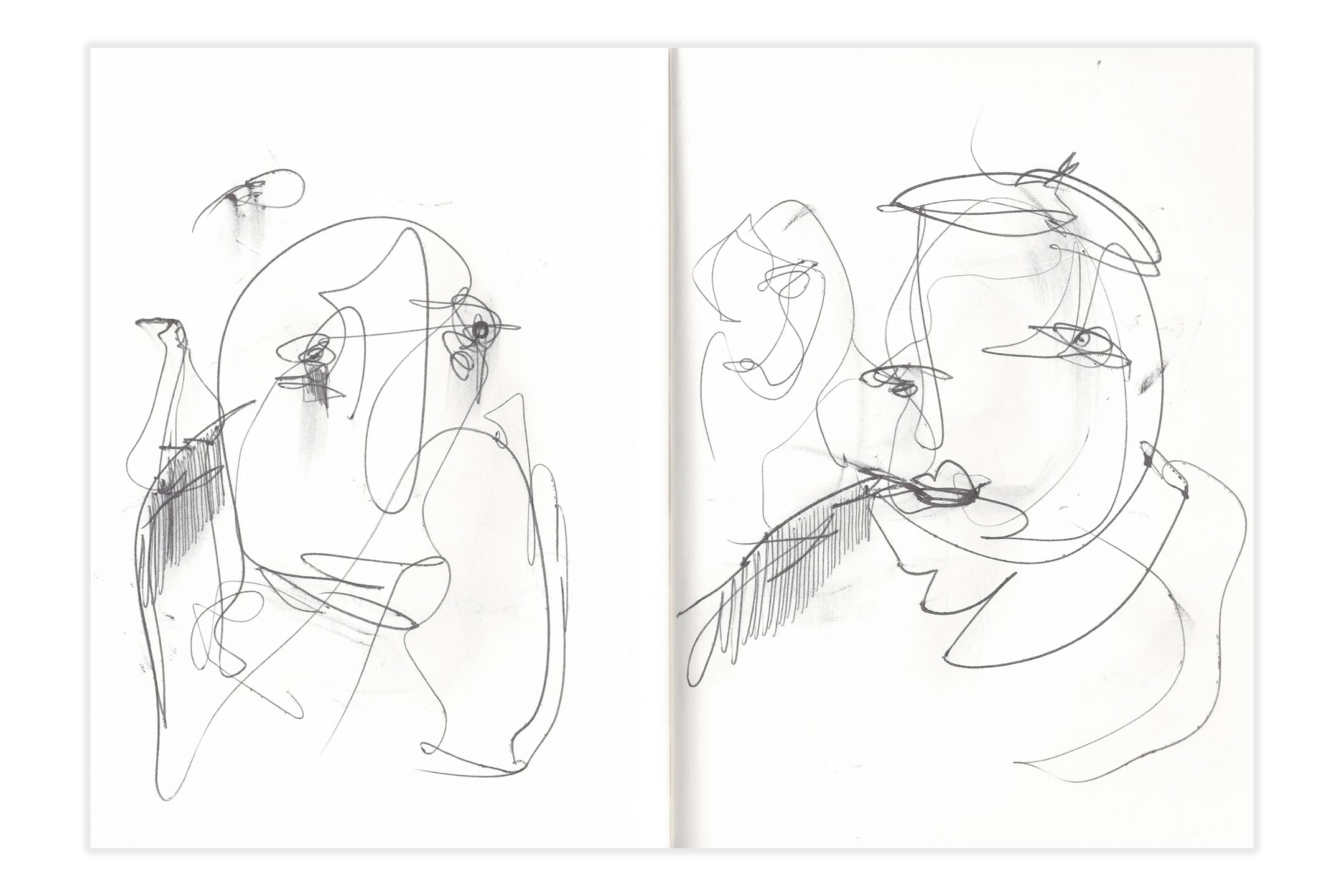BEG4CRED
BEG4CRED
[Episode 4]
Welcome to a new episode of the Creative Minds Project with my long-awaited next guest, Beg4Cred, a.k.a. Samuel Mead.
Beg4Cred is a “consciously independent” South-London based artist, who carries many accolades such as painter, writer, musician, tattooist, street artist, and more. Beg4Cred’s body of work exudes a down-to-earth creative freedom, it feels refreshingly honest, wholesome, and authentic, both aesthetically, and contextually. Beg4Cred and his partner Arizona Smith often work together, having created many endevours together that enable other artists and their practices. Some of these include the New Earth Art School or the Lurner Prize.
For the Creative Minds Project, Beg4Cred covered two notebooks with his lush pen drawings. I’m excited to share my conversation with him about his work and this project.
Q: Can you please tell me about your background? Where are you from? What was your upbringing like? When did you start making art?
A: I grew up in a small village in the South of England. I am the eldest of four children and both of my parents were teachers. Growing up I was exposed to a lot of art and culture and was always encouraged to be creative. My parents used to take us to galleries and exhibitions quite often, and although I always had an affinity for drawing, it was after seeing some Monet paintings in real life that I became inspired to become an artist — the way those paintings made me feel was something that I will always remember.
Q: Can you describe your art? Your process? Your materials?
A: My art is simply my expression. My process is very simple. I don’t think, I just let the pen, or the brush, or the spray can take its course — I continue to allow this until I feel the work exudes a sense of balance. My materials tend to be whatever I come across, I rarely buy art materials, other than spray paints which are very hard to come by any other way. In terms of surfaces, I work a lot with bits that I find in the street.
Q: How did you develop your point of view and your style?
A: I developed my point of view as a result of my experience in life. My style occurred organically by way of spending many, many hours making art.
Q: Your partner Arizona Smith, who’s also an amazing artist, and you are close collaborators and also constantly feed each other creatively. Who else inspired, motivated, mentored, or modeled you to become the artist you are today?
A: Arizona is my main inspiration, motivator and mentor. Aside from her, I was, and still am inspired by all the other people who I have around me in life — from my parents, to my friends and neighbors, to artists like Monet, Picasso, Matisse, Basquiat, Hilma AF Klimt, Ralph Steadman, Keith Haring amongst many others. I have also been equally inspired by non-visual artists, especially hip-hop artists such as Mos Def, Timbaland and Missy Elliot.
Q: Can you tell me a little bit about your ongoing projects?
A: Currently I am focusing heavily on writing — poetry, lyrics, and prose — I am working on three or four different music projects in which I am performing my writing over music. My last music project can be found by searching ‘Monk Rap – Beg4Cred’ on all streaming platforms. Also, check my Soundcloud which is Beg4cred.
Q: What are the motivations/reasons behind staying independent from the conventional art world, creating affordable, accessible work, and creating resources for other artists, like the New Earth School and the Lurner Prize?
A: Independence from institutions represents artistic freedom and individual sovereignty. I hope to inspire more artists to have the confidence to establish themselves as independent, self-supporting artists — that is what projects like The Lurner Prize and The New Earth Art School are about.
Q: When’s the New Earth Art School reopening? What are your plans for the future?
A: We don’t know when the New Earth Art School will reopen yet. In the future, we would like to establish it as a kind of art and healing retreat centre, somewhere rural.
Q: You’ve said something on one of your podcast episodes with Arizona that really caught my attention. You’ve said (and I paraphrase) that you’d describe yourself mainly as a writer, and because it was much more intimidating to write, you’ve started painting instead. I think this can be relatable for many creatives. Can you tell me a little bit more about that?
A: Yes, I do think that writing is the area of art in which I have the greatest potential to express myself satisfyingly. However, I do find writing difficult, possibly because I feel more pressure when I use words than I do when I draw or paint.
I think there is something to be said about the pressure one places upon oneself when one assumes any sort of title, as I did when I originally decided that I was a ‘writer’.
Also, writing is just a very hard thing to do well.
Q: As a writer, I’d love to read your manifesto. Do you have one? And how do you feel about art manifestos?
A: I don’t have a manifesto for writing or art. If I did it would be very short and say something like ‘just do it, don’t judge it, keep doing it, don’t stop.’
I’m not especially interested in art manifestos but sometimes they can be inspiring — I haven’t read that many.
Q: One of the things I appreciate the most about your art is how effortless it feels. It might be because you use whatever’s around you like found objects, magazines, human bodies, or the streets. Or maybe it’s because you are quite entrepreneurial and self-starting towards it. I think this not only shows your values, but it must also works as a creative fuel. Is this a conscious effort?
A: Yes, I am consciously independent and self-starting/sustaining.
Q: How does London influence your work?
A: A great deal. It’s where I live and have been for the past 11 years. I am influenced by everything about the city, it is a part of me so it is inevitable that it influences what I make.
Q: Where does Beg4Cred come from? And how does this name separate your art from the rest of your life?
A: The name Beg4Cred was initially a name I came up with for an art collective I was planning to establish, back when I was working as a cycle courier. The idea was to start an art collective for people working in low-paid jobs. It never took off because I was too exhausted from doing that job, but I kept the name and started using it when I began tattooing.
The name doesn’t separate my art from the rest of my life — there isn’t really any separation between my life and my art — it’s all one thing.
Q: Finally, can you tell me a bit about the notebooks you’ve made for this project?
A: With the notebooks, I just opened them up and expressed what I was feeling at the moment — it’s as simple as that. I hope that people enjoy looking at them.




































